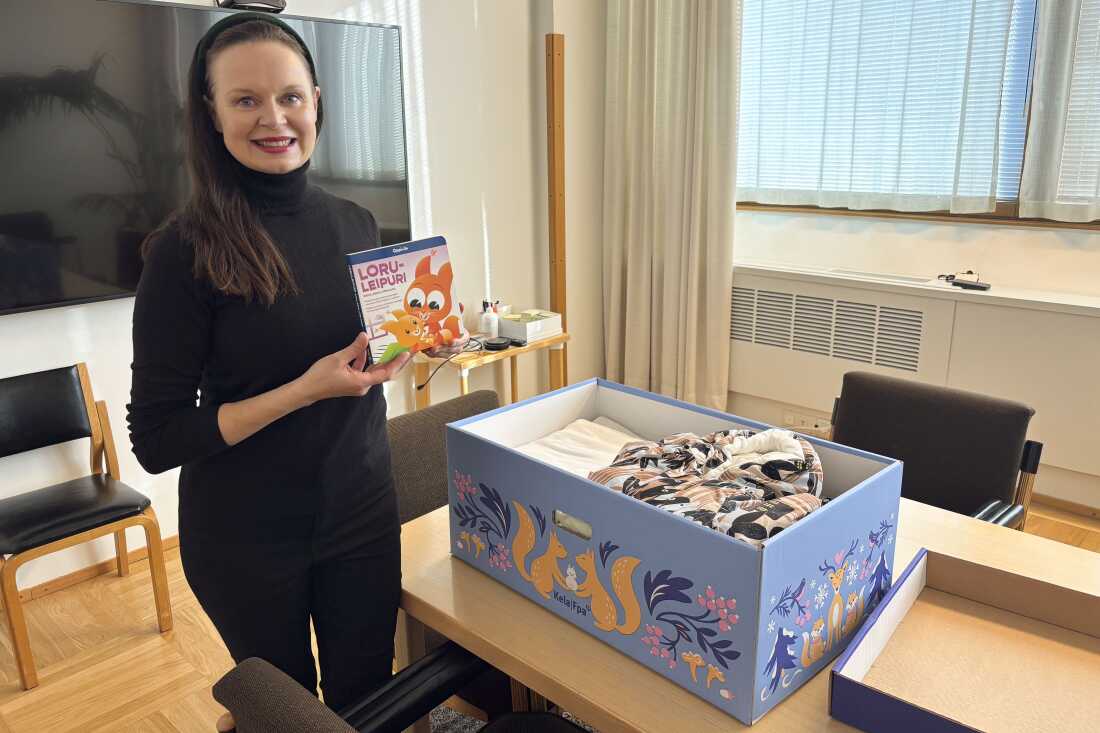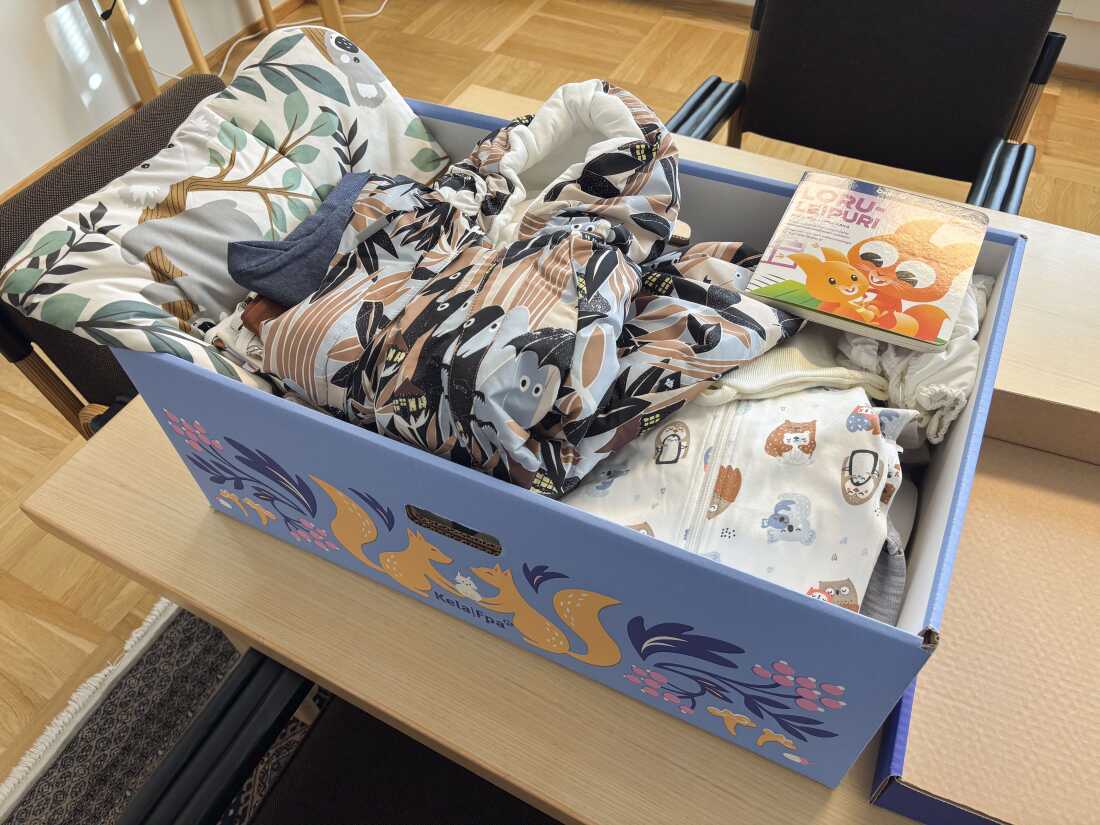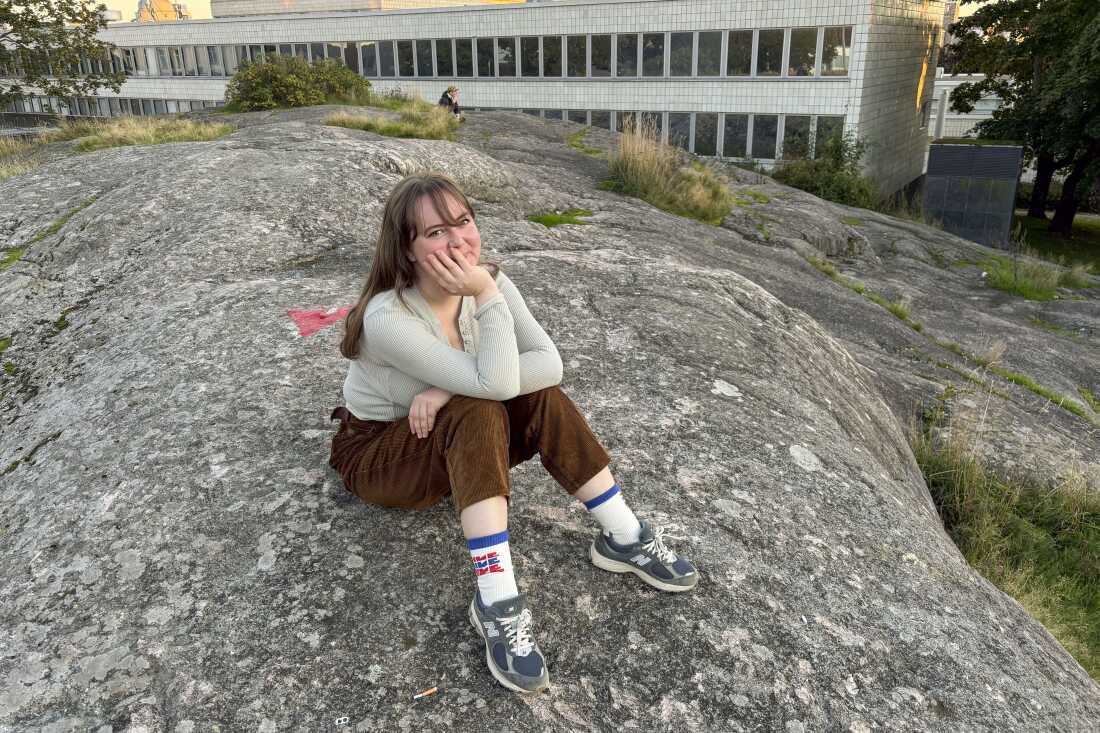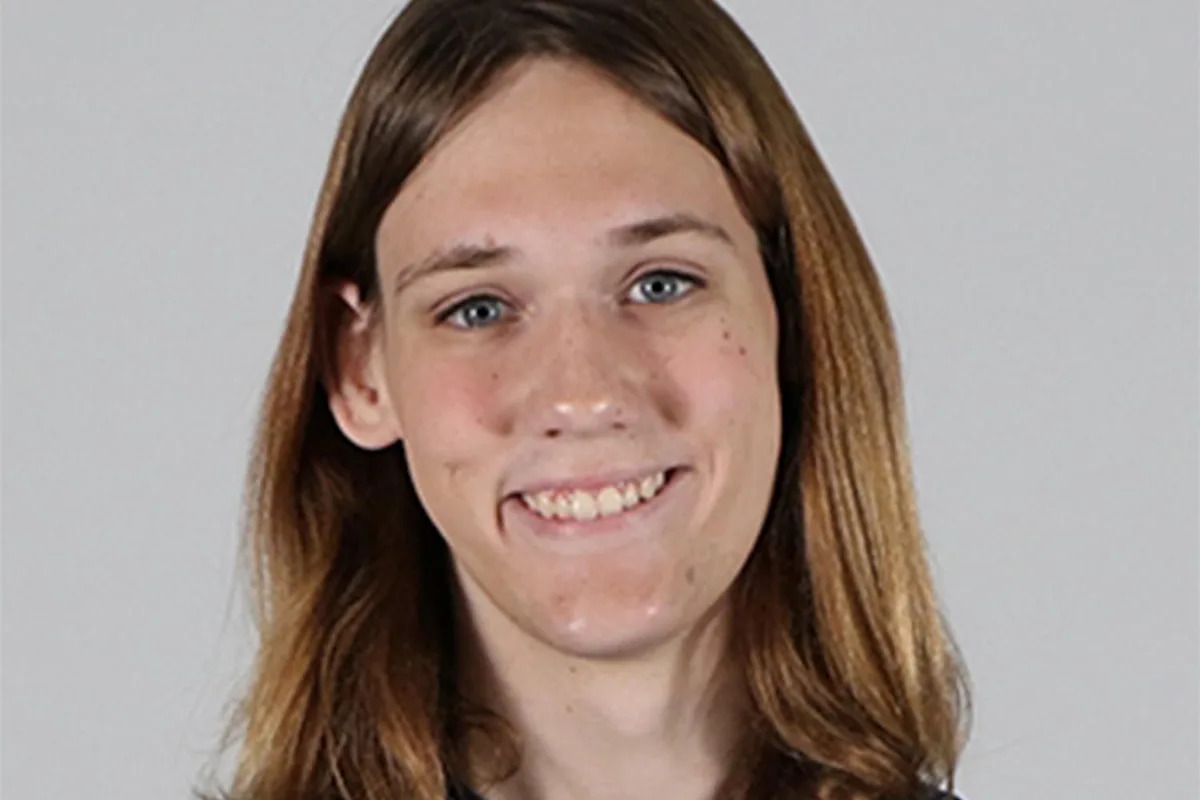
Poa Pohjola, 38, and Wilhelm Blomberg, 35, of Helsinki, welcomed their first child in July. After initially hesitating to have a baby, Pohjola says she realized in her mid-30s that she wished to turn into a mom, and Blomberg agreed.
Sarah McCammon/NPR
disguise caption
toggle caption
Sarah McCammon/NPR
Households within the U.S. and world wide are having fewer kids as individuals make profoundly completely different choices about their lives. NPR’s collection Population Shift: How Smaller Families Are Changing the World explores the causes and implications of this pattern.
On a transparent however chilly autumn day, Poa Pohjola and her associate Wilhelm Blomberg are stress-free of their Helsinki condo whereas their child naps exterior on the balcony, in conventional Finnish fashion.
“They sleep very nicely exterior, in colder levels, I believe,” Pohjola mentioned with fun. “Or, that is how I grew up pondering.”
Pohjola is 38 and Blomberg is 35. They have been collectively for about three years, they usually began speaking about having a child early on – though Pohjola had as soon as thought she may by no means have children.
“I believe I used to be denying that for myself as a result of it appeared [like] one thing that might be unimaginable to have,” she mentioned.
In her 20s, Pohjola says she struggled to determine what she wished from life. By the point she met Blomberg, she knew the window of alternative to turn into pregnant was closing due to her age.
However one night time, the couple talked about their needs for his or her future, and she or he advised Blomberg she thought she wished a child. He agreed.
Blomberg says they each felt able to be dad and mom.
“One, in a approach, convincing argument was that each of us have had time to, like, roam round and do what we would like in life,” he defined.
Researchers say Finnish individuals are more and more delaying having kids, or not having them in any respect. The nation’s “complete fertility charge” — a technical time period utilized by demographers — has fallen to historic lows lately. Though there have been some signs of a possible rebound in latest months, the quantity stays lower than 1.3 kids per girl — nicely under the alternative degree of two.1 wanted to keep up a gentle inhabitants.
That is regardless of the Nordic area’s status for offering paid time without work for each moms and dads, together with childcare and different assist. As households world wide are having fewer kids, even Europe is seeing a serious drop in start charges regardless of these beneficiant, publicly funded advantages.
Amongst different issues, which means much less demand for Finland’s iconic child containers.

Eeva Patomeri, a spokesperson for Kela, Finland’s taxpayer-funded social insurance coverage company, says the federal government has been distributing “child containers” full of clothes and different toddler provides because the Thirties. However she says the demand has declined together with the start charge.
Sarah McCammon/NPR
disguise caption
toggle caption
Sarah McCammon/NPR
“It has a great deal of winter garments, a great deal of summer season garments, a great deal of child care objects, one thing for mothers,” mentioned Eeva Patomeri, a spokesperson for Kela, Finland’s taxpayer-funded social insurance coverage company.
They have been handing out the containers because the Thirties and there is a new version of the field annually. However many new dad and mom had been nonetheless getting final yr’s field nicely into 2025 as a result of Kela nonetheless had so many left over from 2024.
“Generally the field, we begin delivering it in spring, and now it was August, and that is due to low start charges,” Patomeri mentioned, including extra dad and mom are selecting money funds in lieu of the field, too.
Advantages for Finnish dad and mom go far past free child garments and blankets. Each moms and dads obtain government-subsidized parental depart by way of Kela, low-cost childcare and nationwide healthcare.
Kela’s analysis supervisor, Anneli Miettinen, says traditionally, leaders of the Nordic nations: Finland, together with Denmark, Iceland, Norway and Sweden, thought these insurance policies had been serving to to assist comparatively steady start charges.
“So we can’t actually any longer say that it is our good household insurance policies that designate good fertility within the Nordics,” she mentioned.

Together with Finland’s iconic child containers full of provides, Finland’s authorities provides new dad and mom taxpayer-funded advantages together with paid parental depart, low-cost subsidies, and nationwide healthcare.
Sarah McCammon/NPR
disguise caption
toggle caption
Sarah McCammon/NPR
Births have fallen throughout the region, with Finland’s falling to the bottom charge among the many 5 nations — down by a third since 2010.
“What’s puzzling researchers, is how this may very well be true, as a result of all of those nations are comparatively good in offering assist to households,” Miettinen mentioned, “however there aren’t actually excellent explanations for the very low fertility charges at current.”
Immigration has offset a number of the decline, however officers in Finland, like many different nations dealing with this international pattern, are nonetheless nervous about an growing older inhabitants, a shrinking workforce and strain on the pension system.
Anna Rotkirch, with the nonprofit Household Federation of Finland authored a report last year commissioned by the Finnish authorities, which outlined doable causes and coverage options. Rotkirch says her analysis suggests a niche between what younger individuals say they need from life and the households they in the end kind.
“We go to colleges; you discuss to 17-year-olds, and we’re like, ‘What could be your ideally suited household? If you’d like a household in any respect, what could be your ideally suited life?'” she defined.
“You get these, surprisingly, in a approach, normative perceptions,” she added. “You understand, ‘I desire a small home with a canine and a backyard and a partner and three kids.'”
“And it actually breaks my coronary heart, as a result of I am like, that is not going to occur. If the world goes on prefer it’s now, you realize, half of you, that is simply not going to occur,” she mentioned.
Disconnected and financially unsure amid household planning
Rotkirch says there look like many doable causes for this decline. Many younger individuals are specializing in their training and careers. Those that have kids are having them later. Rotkirch says younger individuals are also having a more durable time forming relationships, and a few researchers suppose know-how is partly accountable.
“Screens are away from precise bodily, embodied interactions, and it is in these interactions that infants get made and in addition individuals fall in love,” she defined. “The bodily a part of our humanity is clearly at stake.”
Milla Tuokkola, a 34-year-old tv author in Helsinki, says she’s tried relationship on-line. However too typically, she says, she’s been harassed and subjected to degrading language.
“They’re simply very porn-brained…objectifying,” she mentioned of the lads she’s assembly on-line and on relationship apps. “I really feel like they’re being radicalized on-line after they’re younger.”
Tuokkola is divorced. Generally, she thinks she’d wish to have a baby, however she’s had bother assembly the precise associate.
“They do not appear a protected, dependable choice to have a baby with,” she mentioned.

Milla Tuokkola, 34, a tv author in Helsinki, says she’s open to havi
Support Greater and Subscribe to view content
This is premium stuff. Subscribe to read the entire article.
















